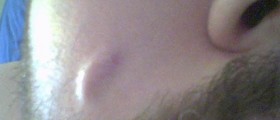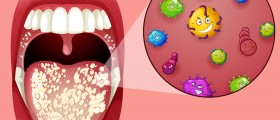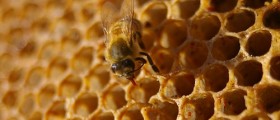
Ringworms-Overview
Also called Dermatophytosis, ringworm is an infection on the surface of the skin. It's characterized by an itchy, red circular rash with healthy-looking skin in the middle. The name “ringworm” is derived from the early belief was that the infection was due to a worm, which it is not. Ringworm is caused by fungus. Nevertheless, the name ringworm has stuck to this day. The fungi that cause this condition feed on keratin, the material found in the outer layer of skin, hair, and nails. In fact, skin fungi can only live on the dead layer of keratin protein on top of the skin. They rarely invade deeper into the body and cannot live on mucous membranes.
There are various ways of getting ringworm. One can get it from other human beings (it can spread by skin-to-skin contact with an infected person), from animals (by petting an animal), from soil (but this occurs very rarely, and it has to be a prolonged contact with very infected soil), and from objects (if an infected person has recently touched an object, and then a healthy person has touched it, they will most likely get ringworm).
Risk Factors and Prevention
There are various risk factors that might increase one’s chances of getting ringworm. For instance, if one lives in crowded, damp, or humid conditions; is in close contact with an infected person, sweats excessively, wears tight clothes, participates in contact sports, shares clothing with a person that has a fungal infection, has a weakened immune system, etc, then they are in great risk of being infected. This is why, the best way of avoiding ringworm is having good personal hygiene, not sharing clothes, avoiding infected animals, etc.
Symptoms of Ringworm
The most common symptoms of this skin condition are: a circular rash on the skin that’s red and inflamed around the edge but the skin looks healthy in the middle; a round, flat patch of itchy skin, or slightly raised expanding rings of red, scaly skin on one’s face or chest. As soon as one’s noticed the symptoms they should consult a doctor. He will determine the best course of treatment.
Creams for Treating Ringworm
There are various ways of treating this condition. Most ringworm infections in humans can be cured successfully by over the counter ringworm treatment. Most of these ringworm creams have active ingredients such as clotrimazole, tioconazole, econazole and miconazole.
The creams that have been proven to be quite effective are:
Miconazole. It has been proven that it prevents the fungal growth by preventing the production of an essential part of fungal cell membranes, ergosterol. Clotrimazole. It also prevents the growth of the fungi. It is one of the most common antifungal creams used for this skin condition. Ketoconazole. This is used not only for ringworm, but also for athlete’s foot and jock itch. Clotrimazole with Betamethasone. A mix of corticosteroid and antifungal medication that prevents the growth of the infection and helps alleviate the itching. Terbinafine. It kills the skin fungi and helps relieve the itching.It is advisable that one consults a doctor before trying any of these creams.















_f_280x120.jpg)
Your thoughts on this
Loading...